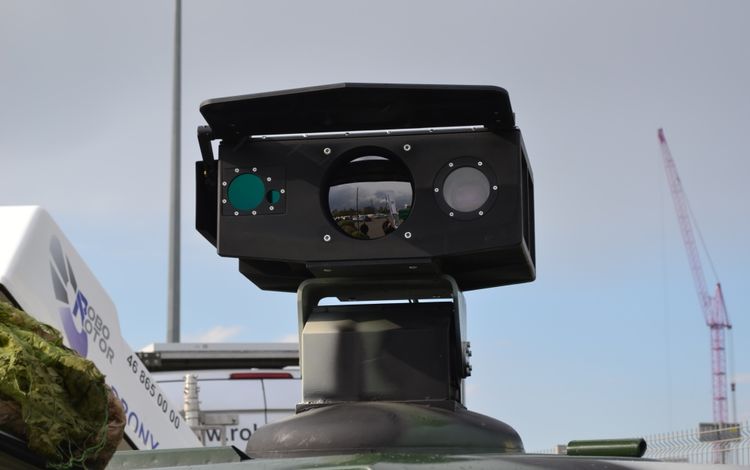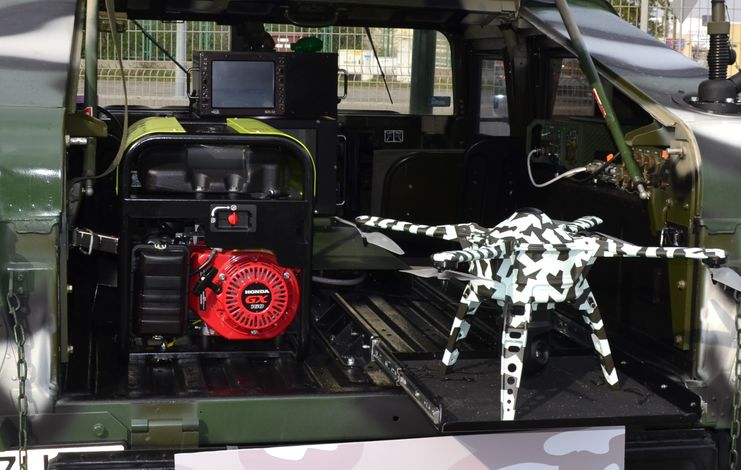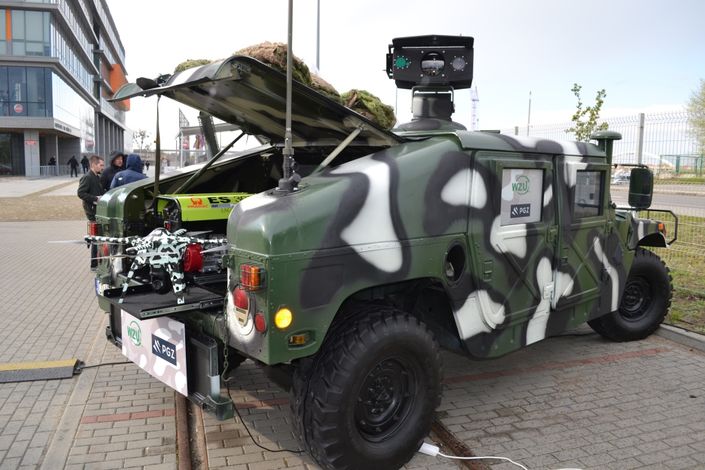The results of the work conducted, presented during the Europoltech 2017 event, suggest that the Grudziądz-based WZU facility has gained a position of a leader of the work implemented by the Polish Armaments Group, the goal of which is to develop a system for detection, identifying and neutralization of drones - SAND.
In its ultimate form, the SAND system is to include the following elements:
-
Detection system consisting of a detection and tracking radar coupled with an optronic sensor suite;
-
Neutralization system capable of carrying out a radioelectronic attack against the UAS’s navigation (GPS) and communication systems.
-
Mission control, visualization, planning and recording system.
The representatives of the WZU facility assume that two basic variants of the SAND system would be operated. They would differ in their purpose, and, above all, in the way in which the preliminary detection of the UAVs would take place. The counter-drone system designed for military applications would utilize an active radar with a range of around 8 kilometres, whereas the version for the civil users should, above all, use a passive radar, making use of the signals reflected from the drone, received from a variety of other emitters, which shall not delimit the possibility of using such radar system during the peacetime.
WZU facility wants to embed solutions delivered by other entities belonging to the PGZ group, within the SAND system, and in this way, WZU would act as an integrator and as a leader of the consortium established to develop the above-described solution. The above process has been arranged in a way described since the moment when the initial work on the SAND system has begun - back in the year 2015.
A certain portion of the test programme has already been carried out, especially when it comes to the optical sensors, the purpose of which would be, primarily, to identify the potential threat. In this case, drones have been identified successfully at distances of up to 3000 meters. Up until now, WZU-developed Type 01 optronic system has been utilized for that purpose. It has already been embedded also within the PRWB 9A33BM OSA anti-aircraft system. Alternatively, a PCO-proposed solution may also be used.
Visualization and control block featuring a video-tracking device also has been developed, originally, at WZU. Thanks to the aforesaid component of the system, the optronic sensor may track the UAS on its own, without any involvement seen on the part of the operator who may focus his attention on other tasks. The said block of the system already uses a software package with Asterix protocol implemented, allowing the system to receive the relevant data from the radar.
It was additionally assumed that all of the imagery provided by the radar and the optronic suite would be consequently visualized on an electronic map. This remains crucial, when the system is being operated in urbanized areas, where there is a need to be in possession of accurate knowledge of the building and street layouts. The solution must also remain generally accessible as SAND has also been designed for the purpose of being used by the uniformed services and civil security agencies.
However, no knowledge is available as to who would be ascribed a role of the supplier of the jamming system. Despite the above, WZU is willing to create another prototype this year, and integrate all of the sensors on that prototype, including the active radar. The radar has already been selected. nonetheless, WZU did not want to reveal who is going to act as the supplier. Same applies to the supplier of the jamming system, a company which is also embedded within the structure of the Polish Armaments Group.
When one defines a method for jamming the drone communication links, it may be useful to work together with the Polish Air Force Institute of Technology. At that research facility, the WZU employees gather the relevant experience, through making a great effort, in order to implement the project. The Institute has been a place where the 2.4 GHz jamming system’s effectiveness has been tested.
Moreover, preparation of a relevant detection system has also been defined as a goal, not only should such system be capable of detecting the micro-class UAVs, as nano-class systems shall also remain detectable for the developed solution. In this way, the suite developed by the WZU facility may extend beyond what is being researched by the competition at the moment.


